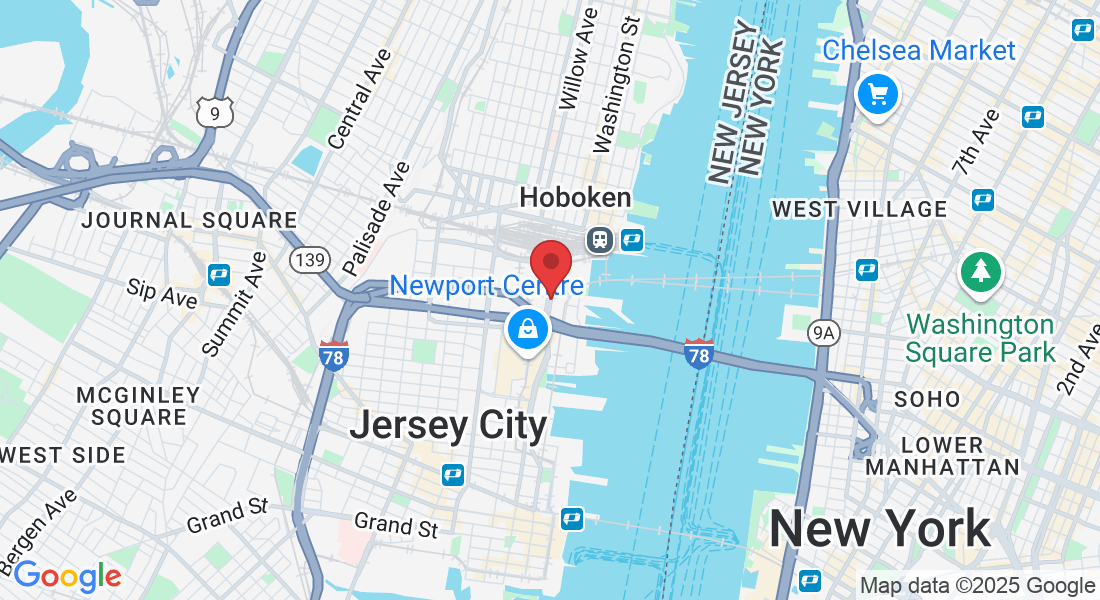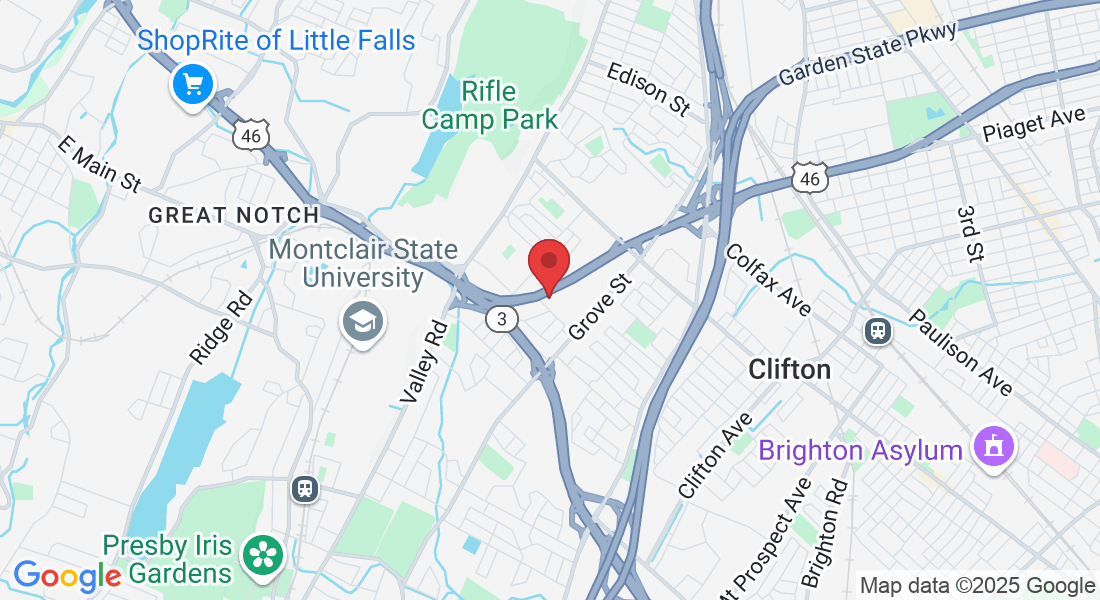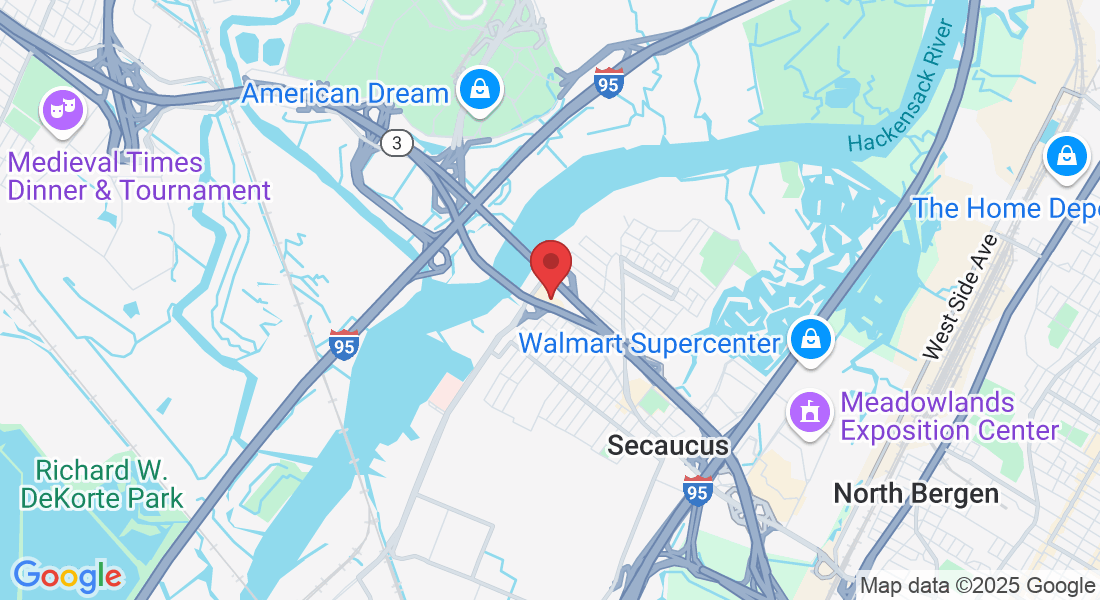New Jersey Rehab Experts
Specializing in comprehensive orthopedic care, New Jersey Rehab Experts offers a wide range of services including Physical Therapy, Sports Physical Therapy, Dry Needling, Chiropractic Care, Neuropathy Treatment, Pain Management, and Manual Therapy. Our state-of-the-art facility is staffed by board-certified therapists dedicated to delivering top-tier care, ensuring you achieve optimal recovery and wellness.
Clinic Located in Jersey City (Newport), Secaucus and Clifton
Genuine Feedback from
Our Patients
Our Affiliations

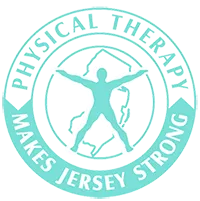
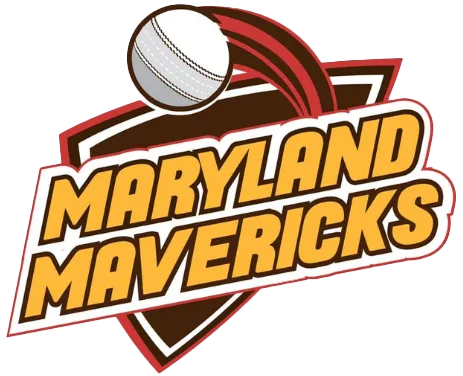
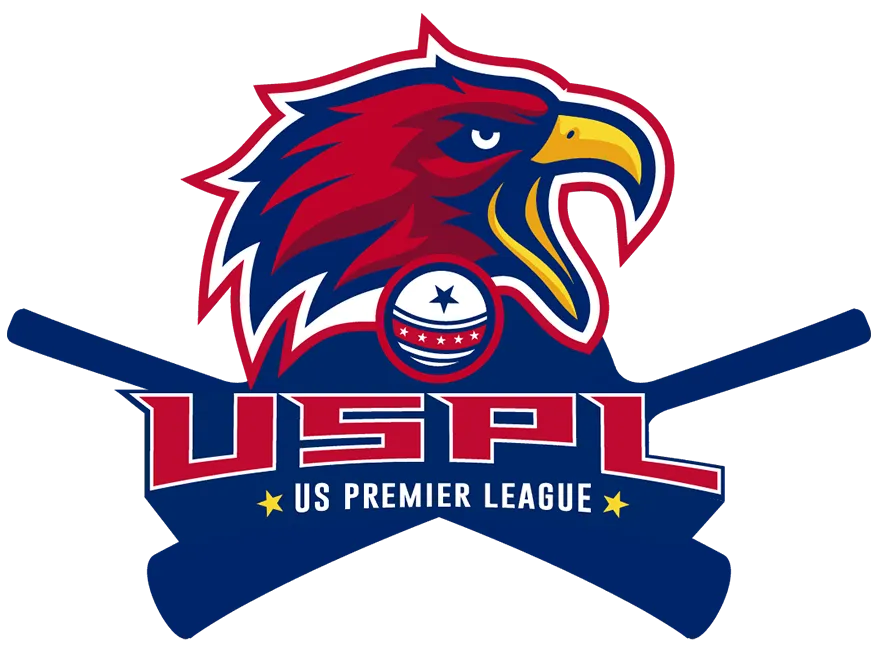


Explore Our Diverse Range of Disciplines
Discover a world of exceptional care customized for all ages! Our dedicated professionals deliver top-notch medical attention, expert rehabilitative therapy, and warm companion care for adults, seniors, and young patients. Experience personalized healthcare with a heart!
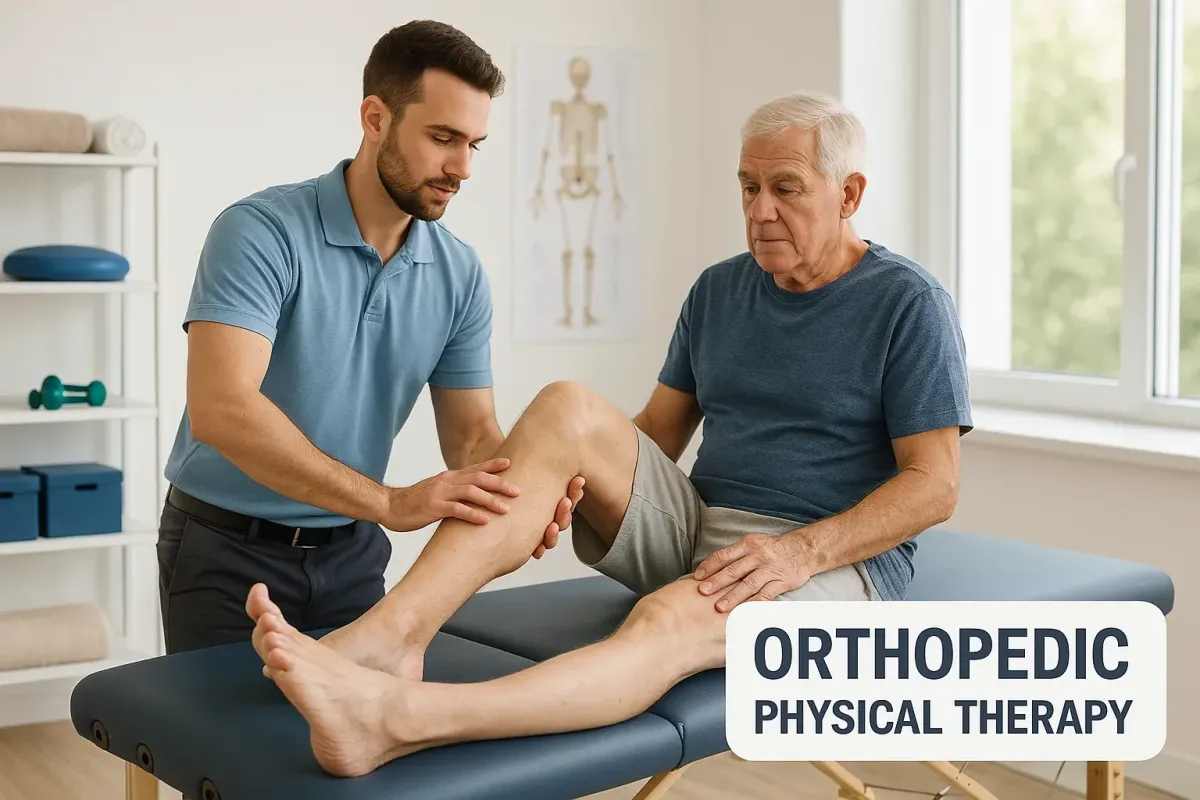
Orthopedic Physical Therapy
At New Jersey Rehab Experts our Orthopedic Physical Therapy program is designed to help patients recover from musculoskeletal injuries, surgeries, and chronic conditions affecting the bones, joints, muscles, ligaments, and tendons. Whether you're healing from a sports injury, managing arthritis, or recovering after orthopedic surgery, our expert therapists create personalized treatment plans to restore mobility, reduce pain, and improve overall function. We use evidence-based techniques such as manual therapy, therapeutic exercises, joint mobilization, dry needling, ultrasound, and neuromuscular re-education
to accelerate your recovery and prevent future injuries.
Our goal is to get you moving confidently and pain-free—whether you're getting back to the gym, the job site, or simply your everyday routine.
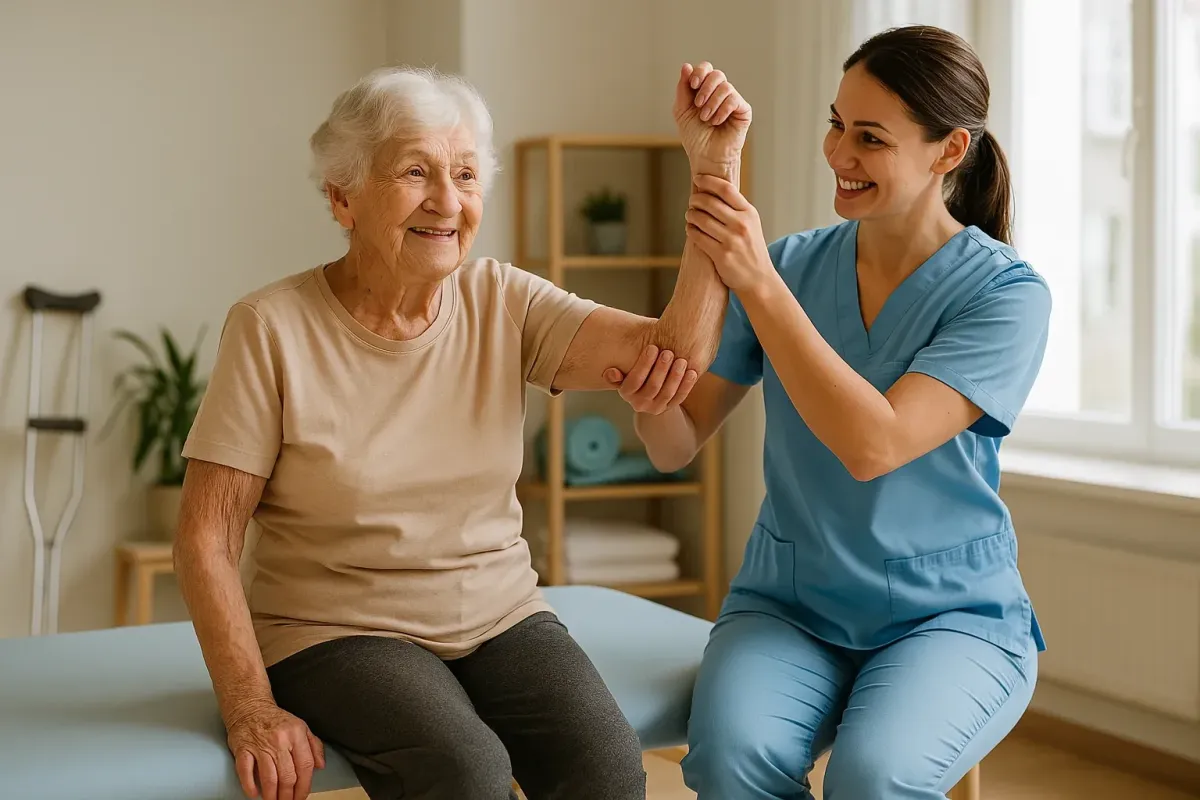
Geriatric Physical Therapy
Our Geriatric Physical Therapy services are tailored to meet the unique needs of older adults. As we age, our bodies undergo natural changes that can affect balance, strength, mobility, and overall independence. Our experienced therapists are here to help seniors stay active, safe, and confident in their daily lives.
We specialize in the prevention and treatment of age-related conditions such as osteoporosis, arthritis, joint replacements, balance disorders, and general deconditioning. Our personalized therapy programs focus on restoring strength, improving flexibility, reducing pain, and preventing falls.
Our geriatric therapy goals include: Enhancing mobility and functionPreventing falls and promoting safetyManaging chronic painIncreasing independence in daily activitiesSupporting recovery from surgery or hospitalization. We take a compassionate, patient-centered approach to care—empowering seniors to maintain a higher quality of life and remain active within their homes and communities.
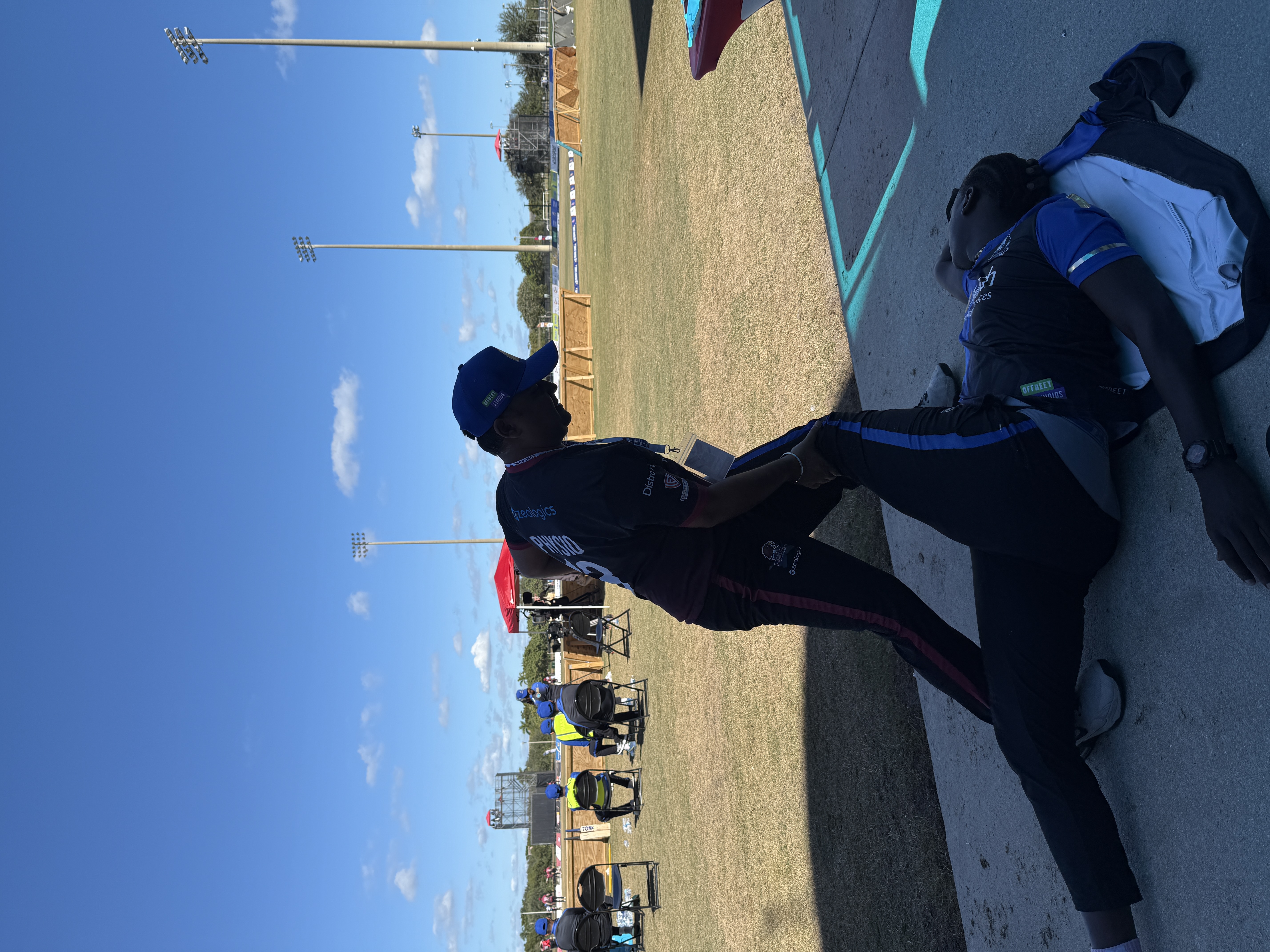
Sports Physical Therapy
At New Jersey Rehab Experts our Sports Physical Therapy program is built for athletes of all levels—from weekend warriors to professional players. Whether you're recovering from an injury, enhancing performance, or aiming for a safe return to sport, we’ve got your back (and knees, shoulders, ankles… you name it!).
Our sports rehab specialists use advanced techniques and evidence-based protocols to treat common athletic injuries such as ACL tears, rotator cuff strains, tennis/golfer’s elbow, sprains, tendonitis, and more We combine manual therapy, functional training, neuromuscular re-education, strength conditioning, dry needling, and return-to-sport testing to help you recover faster and perform better.
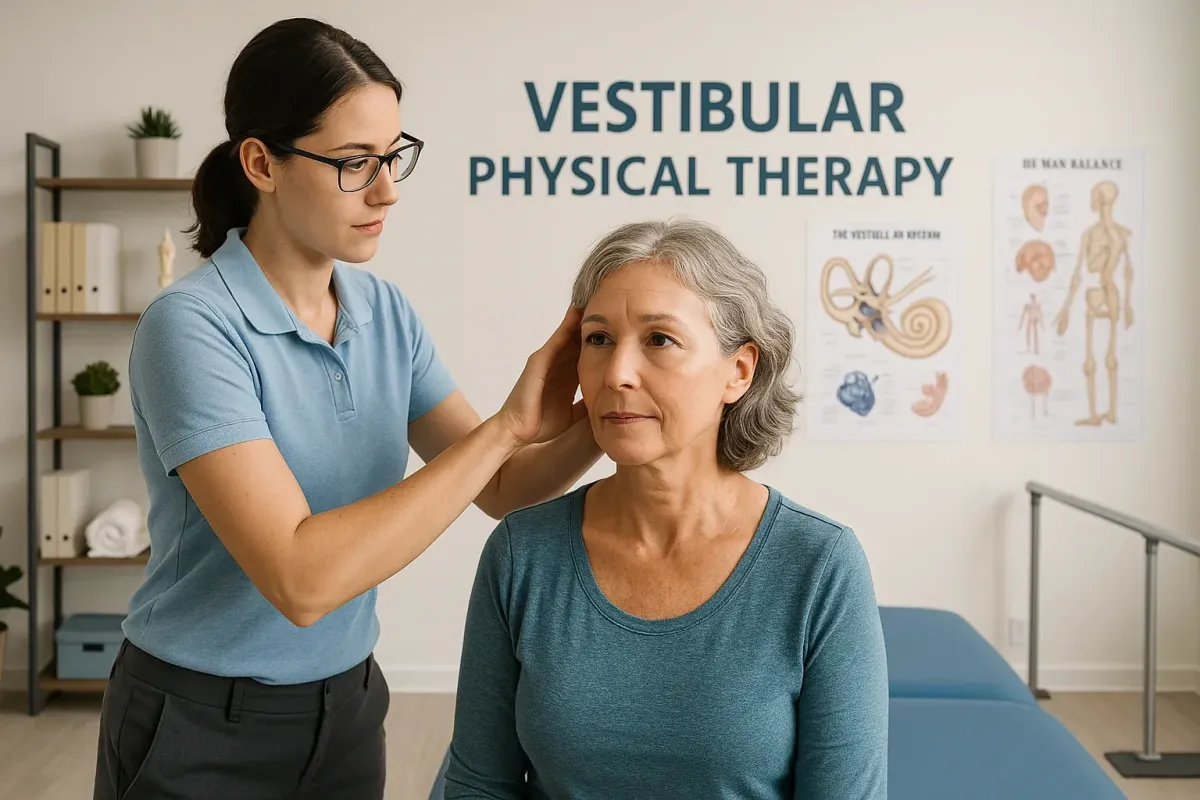
Vestibular Rehabilitation Therapy (VRT)
Feeling dizzy, off-balance, or lightheaded? You're not alone—and you don’t have to live with it. At
New Jersey Rehab Experts our Vestibular Rehabilitation Therapy (VRT) is designed to help you regain control, stability, and confidence in your everyday movements. VRT is a specialized form of physical therapy aimed at treating disorders of the inner ear and balance system , such as vertigo, BPPV (Benign Paroxysmal Positional Vertigo), Meniere’s disease, post-concussion dizziness, and general imbalance. These conditions can make even simple tasks feel overwhelming—but with the right therapy, relief is possible. Our skilled therapists perform a thorough assessment to identify the root cause of your symptoms and develop a custom treatment plan using: Balance and gaze stabilization exercises Canalith repositioning maneuvers (like the Epley maneuver) Habituation and desensitization techniques Fall prevention strategie
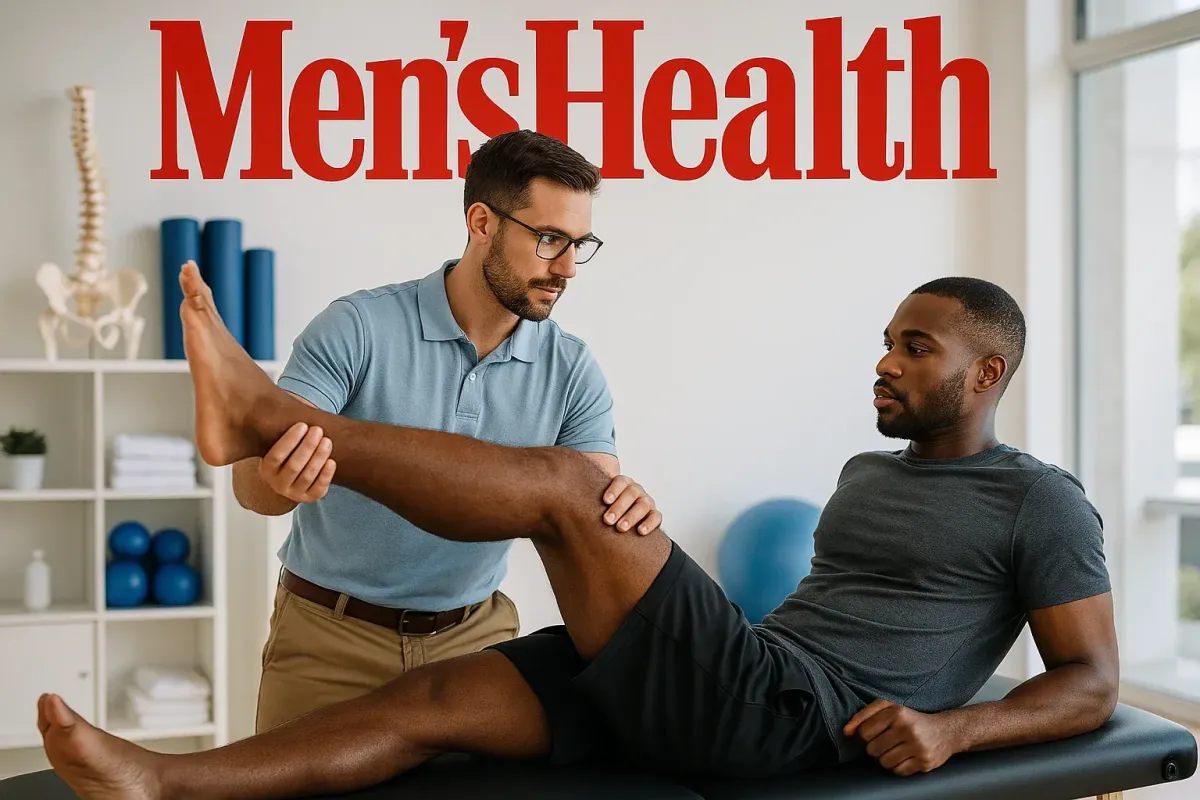
Men's Health Physical Therapy (Pelvic Health PT)
Pelvic health isn’t just a women’s issues men experience it too and we’re here to help. At New Jersey Rehab Experts our Men’s Health Physical Therapy
program is designed to treat a wide range of pelvic floor dysfunctions that can impact comfort, confidence, and quality of life. Our expert therapists offer
discreet, one-on-one care for men experiencing: Pelvic painUrinary urgency, frequency, or leakagePost-prostatectomy rehabilitationErectile dysfunctionConstipation and bowel issuesCore weakness or abdominal pressure Through targeted manual therapy, pelvic floor retraining, biofeedback, breathing techniques, and posture correction, we help restore normal function and reduce symptoms—without surgery or medication. Why it matters: Pelvic floor dysfunction can be frustrating, but it’s also very treatable. We take a judgment-free, evidence-based approach to help men feel strong, supported, and back in control of their bodies. Take the first step toward healing—you don’t have to suffer in silence
.
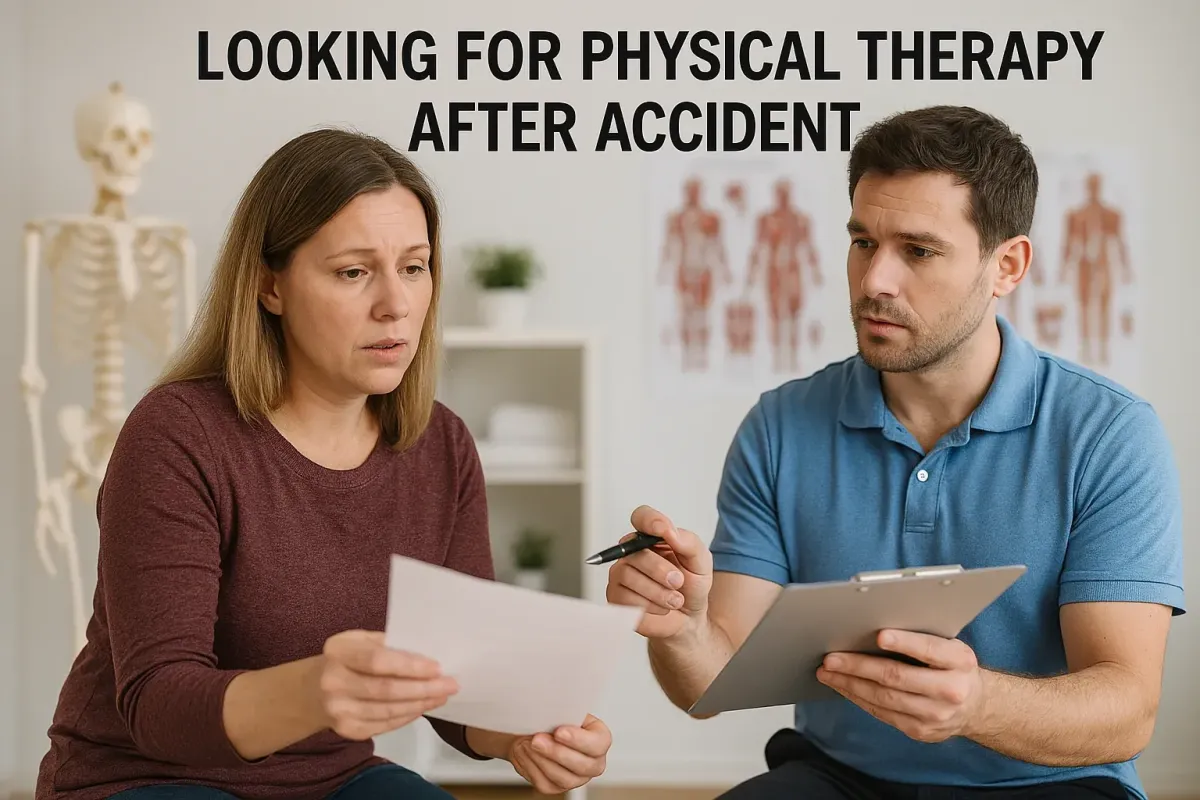
Motor Vehicle & Work Injury Rehab Specialist
At New Jersey Rehab Experts, we specialize in
Motor Vehicle and Work Injury Rehabilitation, helping patients recover from car accidents and workplace injuries with expert, personalized care. Our team treats conditions such as whiplash, low back pain, joint injuries, concussions, and soft tissue damage, using evidence-based therapy to reduce pain, restore function, and support long-term recovery. We work closely with physicians, attorneys, and insurance providers to ensure proper documentation and seamless coordination of care. Whether you're dealing with a workers' comp case or personal injury claim, our goal is to get you back to work, life, and movement—safely and confidently.
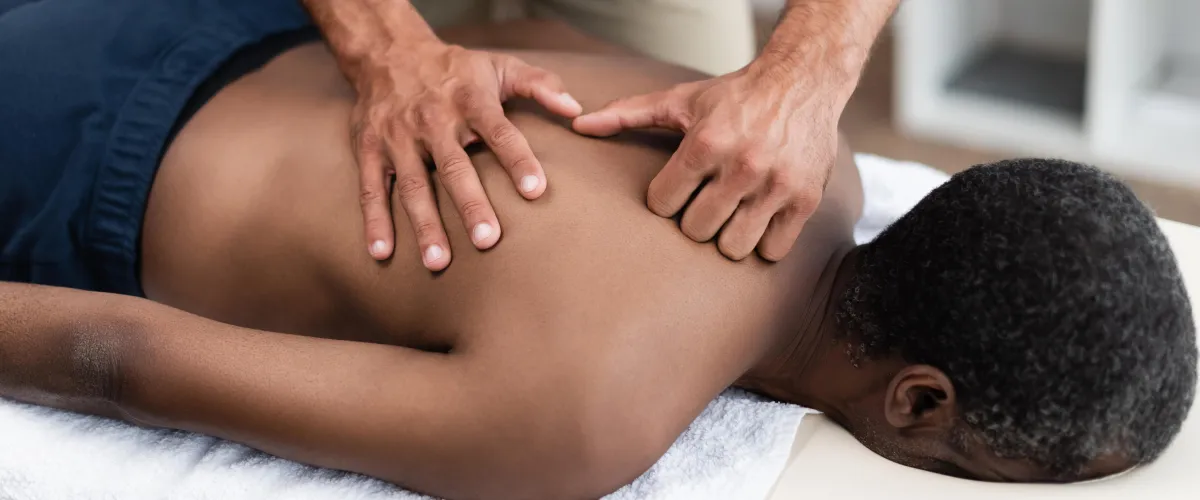
Manual Therapy
Looking for a hands-on approach that goes beyond basic physical therapy?
Manual Therapyoffers targeted, expert techniques designed to relieve pain, improve mobility, and accelerate healing—naturally. This isn’t your average treatment. Imagine combining the precision of Mulligan Mobilizations with the posture-correcting power of the McKenzie Method, or experiencing the rapid results of High-Velocity Thrust Techniques and Spinal Manipulation to unlock stiff joints. Add in the deep-tissue benefits of Myofascial Release (MFR)
and the dynamic support of Kinesiology and Sports Taping, and you’ve got a comprehensive system that helps you move better, recover faster, and feel your best. Whether you're an athlete, a desk worker, or simply tired of chronic pain—this is where real, lasting relief begins.
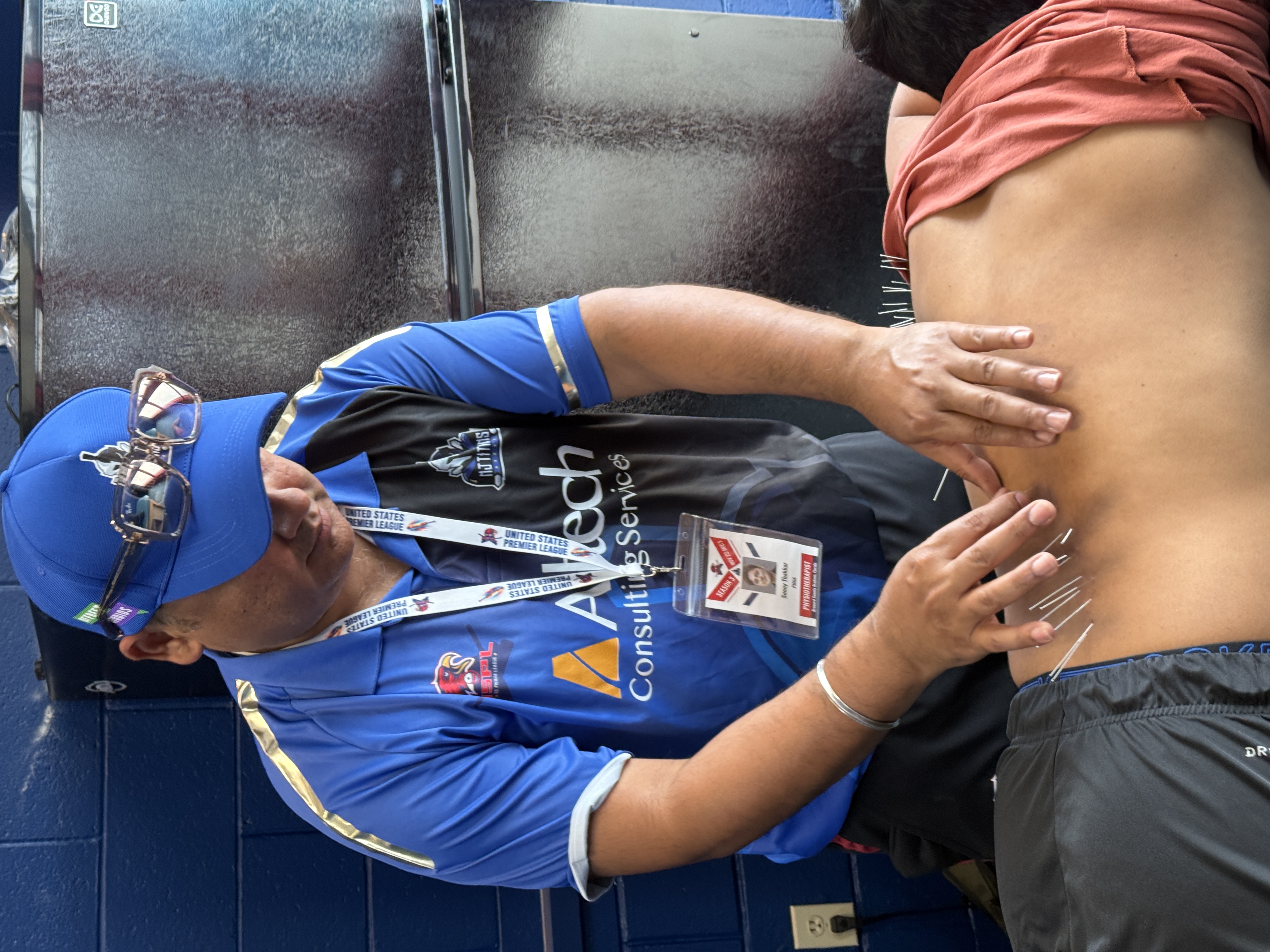
Dry Needling
Dry Needling
is a modern, evidence-based treatment technique used by licensed physical therapists to target trigger points—tight knots in muscles that cause pain and restrict movement. By inserting thin, sterile needles into these areas, dry needling helps release muscle tension, improve blood flow, reduce pain, and restore normal function. It is commonly used to treat conditions like back and neck pain, tendonitis, headaches, sciatica, and sports-related injuries. Unlike acupuncture, which is based on traditional Chinese medicine, dry needling is grounded in Western anatomical and neurophysiological principles, making it a safe and effective option for musculoskeletal pain and dysfunction.
Our Advantages
Specialized Programs for Every Need
From orthopedic rehab and sports therapy to vestibular, pelvic health, and post-injury recovery, we provide comprehensive, patient-focused solutions.
State-of-the-Art Techniques & Technology
We use cutting-edge treatments like dry needling, spinal manipulation, Mulligan & McKenzie techniques, Fit3D scans, Shockwave Therapy , Cupping and more to accelerate healing.
Personalized One-on-One Care
Every patient receives individualized treatment plans with hands-on attention to ensure faster recovery and long-term results.
Trusted by Athletes & Community Leaders
Official providers for multiple cricket teams and a member of respected healthcare associations—our reputation speaks for itself.
Multiple Convenient Locations Across NJ
With clinics in Jersey City, Secaucus, Clifton , and beyond, we’re always within reach—offering flexible scheduling and bilingual support.
Seamless Support for Injury Claims & Recovery
We coordinate care with attorneys, physicians, and insurers for patients recovering from motor vehicle or work-related injuries, ensuring smooth documentation and stress-free rehab.
Meet Our Team

Sunny Thakkar PT, MS ( Exercise Physiologist)
Physical Therapist
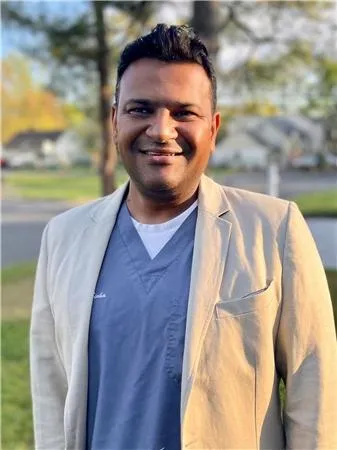
Ashish Sinha, PT, DPT
Physical Therapist

Dr. Rohit Farzala PT, DPT
Physical Therapist
About Us
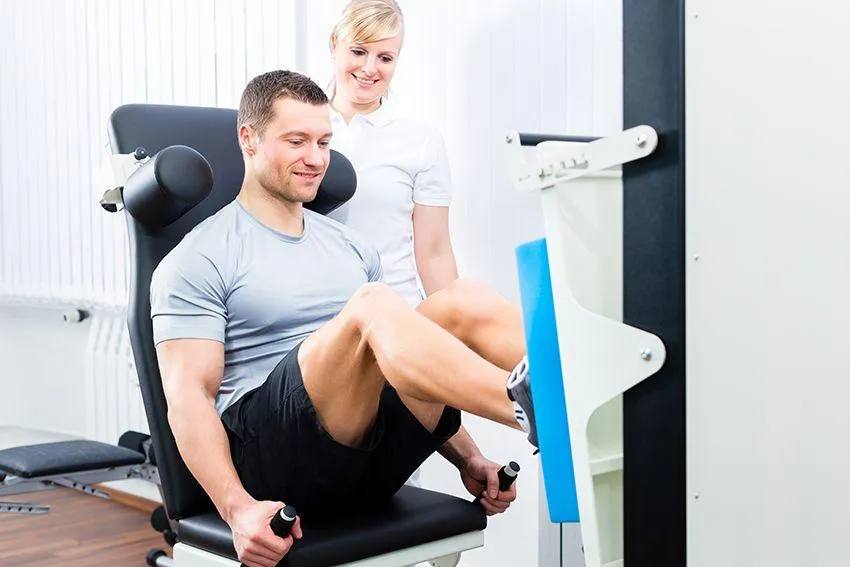

Experience rapid rejuvenation as our specialist team harnesses the power of advanced healing tech to erase pain with ease. We dive deep into your world, assessing every piece of the puzzle—stress at work, life pressures, physical health, nutrition, genes, posture, and even emotional ties—crafting a tailor-made wellness blueprint that's as unique as you are. With our dedicated holistic touch, we don't just treat symptoms; we empower you to embrace a pain-free, harmonious life.
Ask a Question

Discover Effective Pain Management Near You: Top Strategies and Local Resources
Discover Effective Pain Management Near You: Top Strategies and Local Resources
Living with chronic pain can feel isolating and overwhelming, but you don’t have to face it alone. Whether you're dealing with daily discomfort or a long-term condition, discovering effective pain management strategies nearby can bring relief and improve your quality of life. From innovative therapies and holistic treatments to local resources and support groups, there's a wealth of options available. This article explores proven approaches to pain relief, guiding you toward the best practices and facilities that cater to your specific needs. Empower yourself with knowledge and take the first step toward a more comfortable, fulfilling life as we uncover the top strategies for effective pain management right in your community. Say goodbye to the limitations of pain and hello to a brighter, more active future!
Understanding Pain Management: An Overview
Pain management is a multidisciplinary approach that seeks to alleviate the discomfort associated with various conditions, whether acute or chronic. This practice encompasses a broad spectrum of strategies tailored to address pain's complex nature, targeting its physical, psychological, and emotional dimensions. Effective pain management not only aims to reduce pain intensity but also to enhance the overall quality of life for individuals grappling with persistent discomfort. As such, understanding pain management involves exploring diverse methodologies and adapting them to suit personal needs.
The field of pain management has evolved significantly over the years, driven by advancements in medical research and technology. Today, patients have access to an array of treatments ranging from traditional medical interventions to innovative therapies and holistic approaches. This diversity allows for a more personalized treatment plan that can address the unique aspects of each patient's pain experience. By integrating various techniques, healthcare providers can offer a comprehensive strategy that maximizes pain relief and promotes healing.
Pain management is not a one-size-fits-all solution; it requires a tailored approach that considers the underlying cause of pain, the patient's medical history, and overall well-being. This personalized strategy often involves a combination of medications, physical therapy, psychological support, and lifestyle modifications. By working closely with healthcare professionals, patients can develop an effective pain management plan that suits their specific needs and helps them regain control over their lives.
Types of Pain and Their Management Strategies
Pain can be categorized into several types, each necessitating different management strategies. Acute pain, for instance, is typically short-lived and often linked to a specific injury or condition like surgery, fractures, or infections. Managing acute pain involves addressing the immediate cause and usually includes medications such as analgesics, nonsteroidal anti-inflammatory drugs (NSAIDs), or opioids for severe cases. Early and effective management of acute pain is crucial to prevent it from becoming chronic.
Chronic pain, on the other hand, persists for months or even years and often lacks a clear cause. Conditions like arthritis, fibromyalgia, and neuropathic pain fall under this category. Managing chronic pain is more challenging and requires a multifaceted approach. Medications alone may not suffice, and additional treatments like physical therapy, cognitive-behavioral therapy (CBT), and lifestyle changes become essential. Chronic pain management aims to reduce pain intensity, improve function, and enhance the patient's quality of life.
Another significant type of pain is neuropathic pain, which arises from nerve damage or dysfunction and is often described as burning, shooting, or tingling sensations. Conditions such as diabetes, shingles, and spinal cord injuries can lead to neuropathic pain. Management strategies for neuropathic pain often include medications like anticonvulsants and antidepressants, which target nerve pain specifically. Additionally, interventional procedures such as nerve blocks and spinal cord stimulation can offer relief for patients not responding to conventional treatments.
The Importance of Local Resources in Pain Management
Access to local resources is a crucial aspect of effective pain management, as it ensures that patients can receive timely and convenient care. Local healthcare facilities, including clinics, hospitals, and pain management centers, provide a range of services tailored to address various pain conditions. These resources often include specialized professionals such as pain management doctors, physical therapists, and psychologists who collaborate to create comprehensive treatment plans. Utilizing local resources can significantly enhance the effectiveness of pain management by allowing for regular monitoring, adjustments to treatment, and immediate intervention when necessary.
Community-based resources also play a vital role in pain management. Support groups, wellness programs, and educational workshops offer valuable opportunities for patients to learn more about their condition and connect with others facing similar challenges. These resources can provide emotional support, practical advice, and coping strategies that complement medical treatments. Engaging with the community can lessen the feeling of isolation often associated with chronic pain and empower patients to take an active role in their pain management journey.
Moreover, local resources are essential in facilitating a more holistic approach to pain management. Many communities offer access to alternative therapies such as acupuncture, chiropractic care, and yoga, which can be beneficial for pain relief. These services are often more accessible and affordable when available locally. By incorporating a variety of resources and treatments, patients can develop a more comprehensive and effective pain management plan that addresses all aspects of their well-being.
How to Find Pain Management Specialists Near You
Finding a pain management specialist near you can significantly improve your treatment outcomes and overall quality of life. The first step in this process is to consult your primary care physician, who can provide referrals to reputable pain management doctors and clinics. Your physician can offer valuable insights based on their knowledge of your medical history and specific pain condition. Additionally, they can recommend specialists with expertise in treating your particular type of pain.
Online resources are also invaluable in your search for pain management specialists. Websites such as Healthgrades, Zocdoc, and the American Academy of Pain Medicine offer directories of pain management professionals, complete with patient reviews and ratings. These platforms allow you to filter your search based on location, specialty, and insurance acceptance, making it easier to find a suitable specialist. Reading patient testimonials and reviews can provide a sense of the specialist's approach and effectiveness, helping you make an informed decision.
Local hospitals and pain management centers are another excellent resource for finding specialists in your area. These facilities often have dedicated pain management departments staffed with experienced professionals. Visiting their websites or contacting them directly can provide information on the services they offer, the specialists available, and the process for scheduling appointments. Additionally, many hospitals and clinics host informational sessions or open houses where you can meet the specialists and learn more about their approach to pain management.
Top Pain Management Techniques: From Medication to Therapy
Effective pain management often requires a combination of techniques tailored to the individual's specific needs and pain condition. Medications are a cornerstone of pain management, offering relief from mild to severe pain. Over-the-counter (OTC) medications such as acetaminophen and NSAIDs are commonly used for mild to moderate pain. For more severe pain, prescription medications like opioids, anticonvulsants, and antidepressants may be necessary. These medications work by targeting different pathways in the body to reduce pain signals and inflammation.
Physical therapy is another critical component of pain management, particularly for musculoskeletal pain. Physical therapists use a variety of techniques, including exercises, stretches, and manual therapy, to improve mobility, strengthen muscles, and reduce pain. Personalized exercise programs can help patients regain function and prevent further injury. Additionally, physical therapy can promote the release of endorphins, the body's natural painkillers, providing further relief.
Cognitive-behavioral therapy (CBT) is a psychological approach that addresses the emotional and mental aspects of pain. Chronic pain can lead to negative thought patterns and emotional distress, which can exacerbate the pain experience. CBT helps patients reframe their thoughts and develop coping strategies to manage pain more effectively. This therapy can reduce the impact of pain on daily life and improve overall well-being. By combining medication, physical therapy, and psychological support, patients can achieve a more comprehensive and effective pain management plan.
Alternative Pain Management Approaches: What to Consider
In addition to conventional treatments, many patients find relief through alternative pain management approaches. These methods can complement traditional therapies, offering additional avenues for pain relief. One popular alternative therapy is acupuncture, an ancient Chinese practice that involves inserting thin needles into specific points on the body. Acupuncture is believed to stimulate the release of endorphins and other natural pain-relieving chemicals. Studies have shown that acupuncture can be effective for various types of pain, including back pain, migraines, and osteoarthritis.
Chiropractic care is another alternative approach that focuses on the diagnosis and treatment of musculoskeletal pain, particularly in the spine. Chiropractors use manual manipulation techniques to adjust the spine and other joints, aiming to improve alignment and reduce pain. Chiropractic care is commonly used for conditions such as lower back pain, neck pain, and headaches. Many patients report significant pain relief and improved function following chiropractic treatment.
Mind-body therapies, such as yoga and meditation, can also be valuable components of a pain management plan. Yoga combines physical postures, breathing exercises, and relaxation techniques to improve flexibility, strength, and mental well-being. Regular yoga practice has been shown to reduce pain and improve function in individuals with chronic pain conditions. Meditation, particularly mindfulness meditation, can help patients develop greater awareness and acceptance of their pain, reducing its emotional impact. By incorporating these alternative approaches, patients can enhance their overall pain management strategy and improve their quality of life.
The Role of Support Groups and Community Resources
Support groups and community resources play a vital role in the holistic management of chronic pain. These groups provide a safe and understanding environment where individuals can share their experiences, challenges, and coping strategies. Participating in a support group can reduce feelings of isolation and provide emotional support from others who understand the complexities of living with chronic pain. Regular meetings can foster a sense of community and belonging, which is essential for mental and emotional well-being.
Community resources extend beyond support groups to include various programs and services designed to assist individuals in managing their pain. Many communities offer wellness programs that include exercise classes, nutrition workshops, and stress management seminars. These programs can provide valuable tools and techniques for managing pain and improving overall health. Access to such resources can empower patients to take an active role in their pain management journey and make informed decisions about their care.
Educational workshops and seminars are another important community resource. These events often feature experts in pain management who provide information on the latest research, treatment options, and self-care strategies. Attending these workshops can enhance patients' understanding of their condition and introduce them to new approaches to pain relief. Additionally, these events can facilitate networking with healthcare professionals and other individuals facing similar challenges, creating opportunities for support and collaboration.
Insurance and Payment Options for Pain Management Services
Navigating insurance and payment options for pain management services can be complex, but understanding your coverage is essential for accessing the care you need. Many insurance plans cover a range of pain management treatments, including medications, physical therapy, and certain interventional procedures. However, coverage can vary widely depending on the specific plan and provider. It's important to review your insurance policy and speak with your insurance company to determine what services are covered and any associated costs, such as copayments or deductibles.
For services not covered by insurance, there are alternative payment options to consider. Some pain management clinics offer sliding scale fees based on income, making treatments more affordable for those with limited financial resources. Additionally, many healthcare providers offer payment plans that allow patients to spread the cost of treatment over time. Exploring these options can help ensure that financial constraints do not prevent you from accessing the necessary care.
Government programs, such as Medicare and Medicaid, provide coverage for certain pain management services for eligible individuals. These programs have specific criteria and coverage limitations, so it's important to understand your eligibility and the services covered. Additionally, some nonprofit organizations and foundations offer financial assistance for individuals with chronic pain, helping to cover the cost of treatments, medications, and other related expenses. By exploring all available insurance and payment options, you can find a solution that fits your financial situation and ensures you receive the care you need.
Patient Testimonials: Success Stories in Pain Management
Hearing from individuals who have successfully managed their pain can be both inspiring and informative. These testimonials provide real-life examples of how different pain management strategies can lead to significant improvements in quality of life. For instance, Jane, a 45-year-old woman with chronic back pain, found relief through a combination of physical therapy, acupuncture, and cognitive-behavioral therapy. By integrating these approaches, she was able to reduce her pain levels, improve her mobility, and return to activities she once enjoyed.
Similarly, Mark, a 60-year-old man with diabetic neuropathy, experienced significant pain reduction through the use of medications, lifestyle changes, and participation in a support group. By working closely with his healthcare team and engaging with his community, Mark was able to better manage his pain and improve his overall well-being. His story highlights the importance of a comprehensive and collaborative approach to pain management.
Another inspiring story comes from Sarah, a 35-year-old woman with fibromyalgia. After struggling with widespread pain and fatigue for years, Sarah found relief through a holistic approach that included medication, yoga, and meditation. By focusing on both the physical and emotional aspects of her condition, Sarah was able to achieve a better balance and improve her quality of life. These success stories demonstrate the potential for effective pain management and offer hope to others facing similar challenges.
Conclusion: Taking the Next Steps in Your Pain Management Journey
Embarking on your pain management journey requires a proactive and informed approach. Understanding the various types of pain and their management strategies is the first step in developing a comprehensive plan tailored to your specific needs. Utilizing local resources, finding specialized care, and exploring a combination of conventional and alternative treatments can significantly enhance your ability to manage pain effectively. Support groups and community resources provide valuable emotional and practical support, helping you navigate the complexities of chronic pain.
It's essential to consider all available insurance and payment options to ensure you can access the necessary care without financial strain. Patient testimonials offer real-life examples of how different strategies can lead to successful pain management, providing inspiration and guidance for your journey. By taking an active role in your pain management plan, you can achieve significant improvements in your quality of life and regain control over your daily activities.
As you move forward, remember that pain management is a dynamic and ongoing process. Regular communication with your healthcare team, staying informed about new treatments and resources, and maintaining a positive and proactive mindset are key to achieving long-term success. Empower yourself with knowledge, seek out the best practices and facilities in your community, and take the first steps toward a more comfortable, fulfilling life. Say goodbye to the limitations of pain and hello to a brighter, more active future.
No matter whether your condition was caused by a sport, work accident or otherwise,
we welcome the chance to serve you.
Opening Hours



